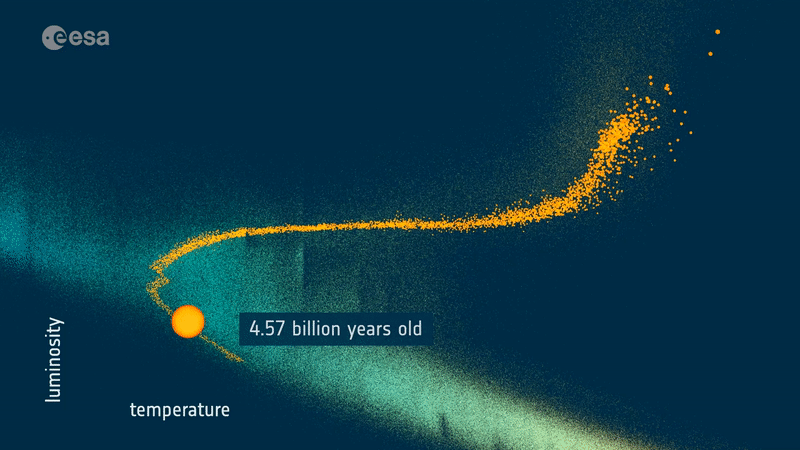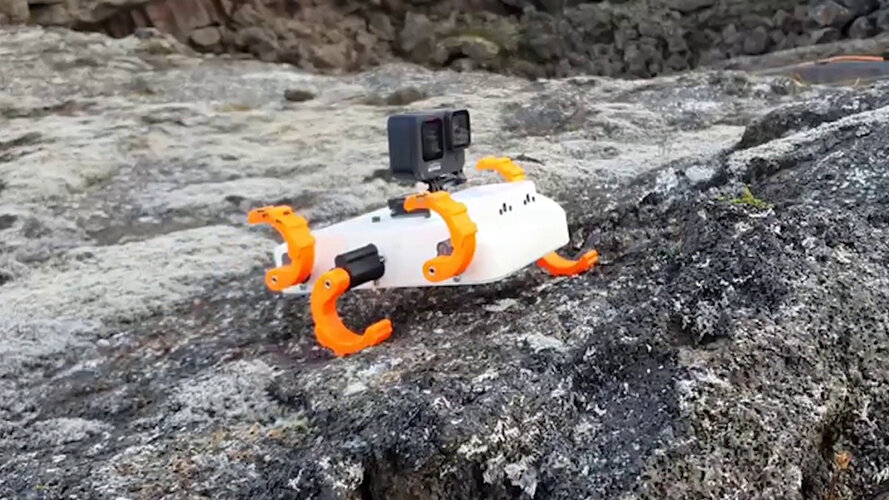
Copernical Team
J-Space partners with Virgin Orbit to bring sovereign air-launch capability to South Korea
 Virgin Orbit (Nasdaq: VORB), a leading launch provider, announced it has signed an agreement with South Korean investment group J-Space. The agreement will allow the companies to assess candidate spaceport launch sites in South Korea, with the goal of providing satellite launch services from there using Virgin Orbit's LauncherOne System.
The cooperative effort is designed to act as a catal
Virgin Orbit (Nasdaq: VORB), a leading launch provider, announced it has signed an agreement with South Korean investment group J-Space. The agreement will allow the companies to assess candidate spaceport launch sites in South Korea, with the goal of providing satellite launch services from there using Virgin Orbit's LauncherOne System.
The cooperative effort is designed to act as a catal RocketStar set to launch TriSept satellite security solution aboard experimental payloads
 TriSept Corporation, a leading provider of launch integration and mission management services, has completed the integration of two experimental mission payloads running its new TSEL satellite security operating software for a suborbital test flight aboard RocketStar's launch vehicle set to liftoff from the Koehn Lake Bed in the Mojave Desert.
TriSept has teamed with RocketStar and its 40-
TriSept Corporation, a leading provider of launch integration and mission management services, has completed the integration of two experimental mission payloads running its new TSEL satellite security operating software for a suborbital test flight aboard RocketStar's launch vehicle set to liftoff from the Koehn Lake Bed in the Mojave Desert.
TriSept has teamed with RocketStar and its 40- Maxar to build 14 space platforms for L3Harris to support SDA's Tranche 1 Tracking Layer Program
 Maxar Technologies (NYSE:MAXR) (TSX:MAXR), provider of comprehensive space solutions and secure, precise, geospatial intelligence, has announced it has been selected by L3Harris Technologies for the design and production of 14 spacecraft platforms and associated support for its Tranche 1 Tracking Layer contract with the Space Development Agency (SDA).
SDA selected L3Harris as a prime for i
Maxar Technologies (NYSE:MAXR) (TSX:MAXR), provider of comprehensive space solutions and secure, precise, geospatial intelligence, has announced it has been selected by L3Harris Technologies for the design and production of 14 spacecraft platforms and associated support for its Tranche 1 Tracking Layer contract with the Space Development Agency (SDA).
SDA selected L3Harris as a prime for i M2 satellite delivers Australia's first high-res Earth observation images
 A UNSW Canberra Space satellite mission, known as M2, is now delivering Australia's first high-resolution remote sensing image of the Earth. UNSW Canberra Space Director Professor Russell Boyce said the capture of the image is an important step forward for Australia's sovereign space capabilities, with the same mission also successfully collecting and transmitting commercial aviation identificat
A UNSW Canberra Space satellite mission, known as M2, is now delivering Australia's first high-resolution remote sensing image of the Earth. UNSW Canberra Space Director Professor Russell Boyce said the capture of the image is an important step forward for Australia's sovereign space capabilities, with the same mission also successfully collecting and transmitting commercial aviation identificat Scientists detect newborn planet that could be forming moons
 For the first time, scientists have discovered what appears to be a brand new planet, 395 light-years from Earth, that could be forming moons.
Scientists using the Atacama Large Millimeter/submillimeter Array, or ALMA, recently detected gas in a circumplanetary disk, the third one ever discovered.
Circumplanetary disks are comprised of gas, dust and debris around young planets th
For the first time, scientists have discovered what appears to be a brand new planet, 395 light-years from Earth, that could be forming moons.
Scientists using the Atacama Large Millimeter/submillimeter Array, or ALMA, recently detected gas in a circumplanetary disk, the third one ever discovered.
Circumplanetary disks are comprised of gas, dust and debris around young planets th Gaia reveals the past and future of the Sun

We all wish that we could sometimes see into the future. Now, thanks to the very latest data from ESA’s star mapping Gaia mission, astronomers can do just that for the Sun. By accurately identifying stars of similar mass and composition, they can see how our Sun is going to evolve in the future. And this work extends far beyond a little astrophysical clairvoyance.
Lunar Zebro
 Video:
00:06:52
Video:
00:06:52
Lunar Zebro, a project of the Delft University of Technology in the Netherlands wants to build a robot and be the first Dutch and European rover to walk on the Moon. Their lunar rover does not only distinguish itself by its small size taking up the same area as an A4 sheet of paper, but also by its unique locomotion. Driven by C-shaped legs instead of wheels, the six-legged rover from where it takes its name in Dutch “zes-benige robot”, will be able to climb over much taller obstacles than its wheeled counterparts, making it ideal for
NanoAvionics extends its satellite bus range enabling advanced space missions
 Global mission integrator NanoAvionics has added two microsatellite buses, the MP42H and the MP42D, to its product line based on its flagship MP42 bus. Capable to host customer payloads of up to 145 kg and a total satellite mass of up to 220 kg, the company has now one of the widest ranges of commercially available modular microsatellite buses in the industry.
Designed to significantly red
Global mission integrator NanoAvionics has added two microsatellite buses, the MP42H and the MP42D, to its product line based on its flagship MP42 bus. Capable to host customer payloads of up to 145 kg and a total satellite mass of up to 220 kg, the company has now one of the widest ranges of commercially available modular microsatellite buses in the industry.
Designed to significantly red Fermi confirms star wreck as source of extreme cosmic particles
 Astronomers have long sought the launch sites for some of the highest-energy protons in our galaxy. Now a study using 12 years of data from NASA's Fermi Gamma-ray Space Telescope confirms that one supernova remnant is just such a place.
Fermi has shown that the shock waves of exploded stars boost particles to speeds comparable to that of light. Called cosmic rays, these particles mostly ta
Astronomers have long sought the launch sites for some of the highest-energy protons in our galaxy. Now a study using 12 years of data from NASA's Fermi Gamma-ray Space Telescope confirms that one supernova remnant is just such a place.
Fermi has shown that the shock waves of exploded stars boost particles to speeds comparable to that of light. Called cosmic rays, these particles mostly ta First stars and black holes
 Just milliseconds after the universe's Big Bang, chaos reigned. Atomic nuclei fused and broke apart in hot, frenzied motion. Incredibly strong pressure waves built up and squeezed matter so tightly together that black holes formed, which astrophysicists call primordial black holes.
Did primordial black holes help or hinder formation of the universe's first stars, eventually born about 100
Just milliseconds after the universe's Big Bang, chaos reigned. Atomic nuclei fused and broke apart in hot, frenzied motion. Incredibly strong pressure waves built up and squeezed matter so tightly together that black holes formed, which astrophysicists call primordial black holes.
Did primordial black holes help or hinder formation of the universe's first stars, eventually born about 100 
